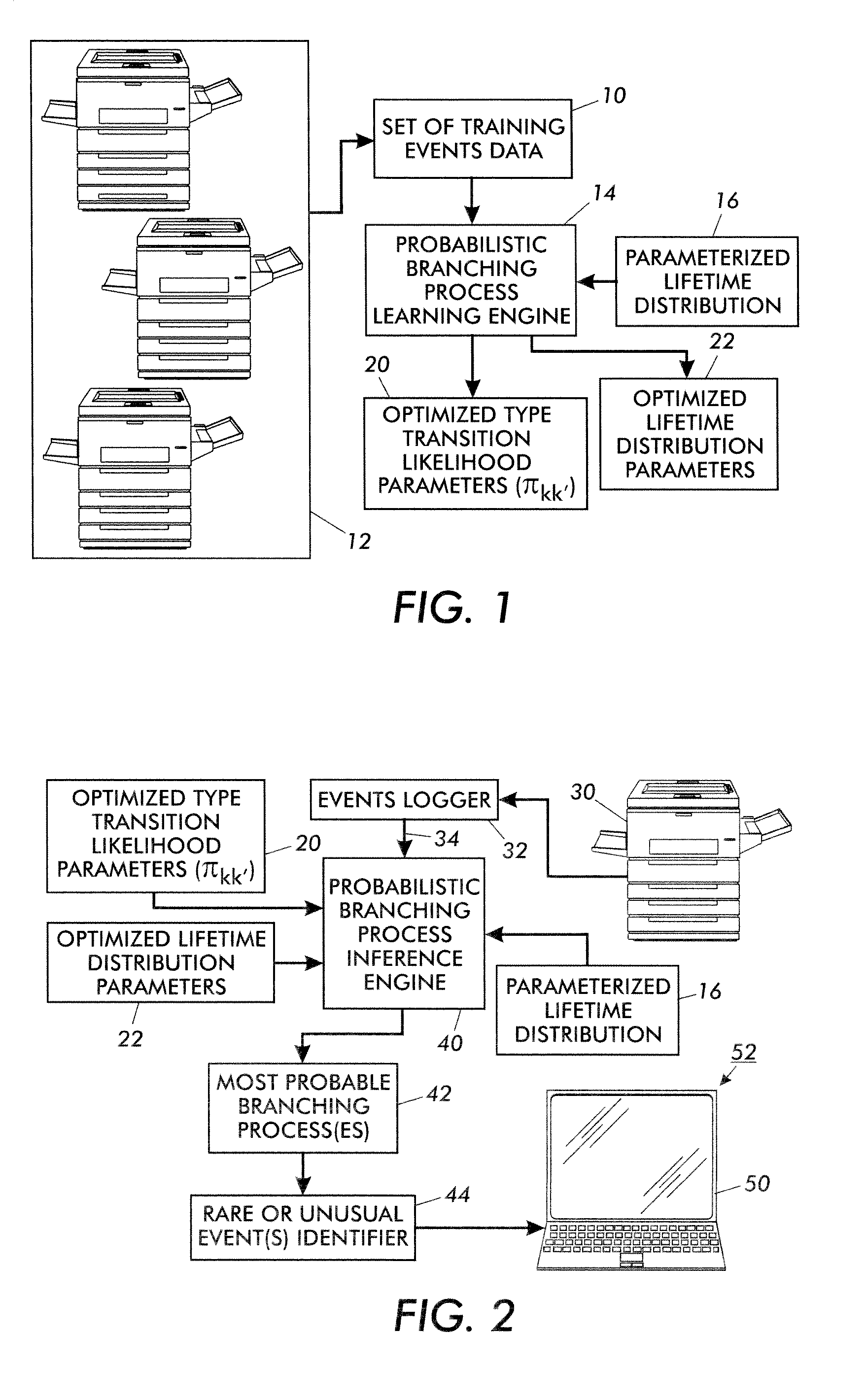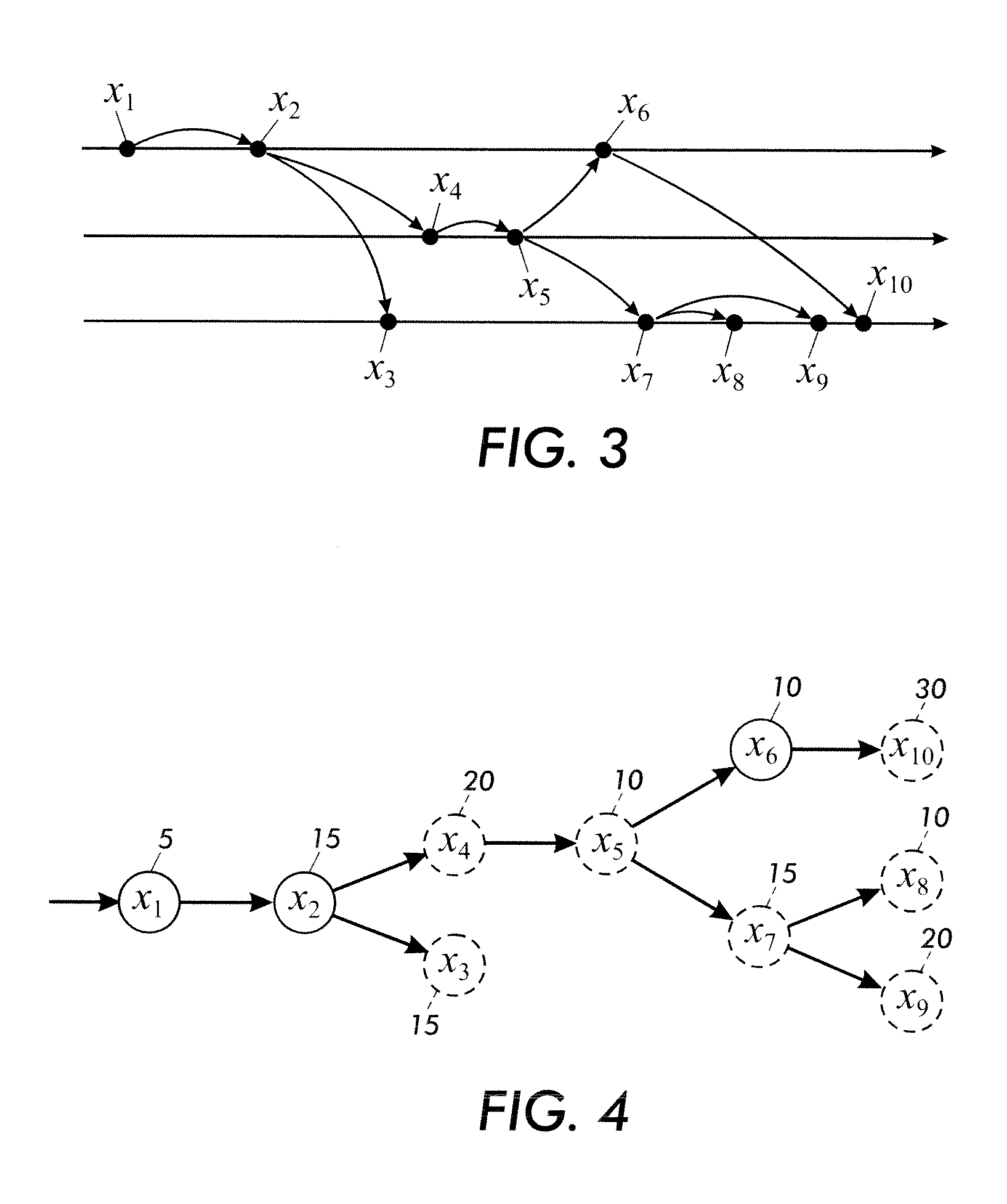Temporal events analysis employing tree induction
a technology of events analysis and tree induction, applied in the field of diagnostics, predictive and data mining, can solve the problems of rare relevant data for diagnostic or forensic applications, overwhelming amount of data collected and stored, and complex devices such as printers, automobiles,
- Summary
- Abstract
- Description
- Claims
- Application Information
AI Technical Summary
Benefits of technology
Problems solved by technology
Method used
Image
Examples
Embodiment Construction
[0015]It is recognized herein that events occurrences are typically not sufficiently characterized by occurrence frequencies or probabilities alone, since events are often interrelated. Moreover, it is recognized herein that the interrelation of events are typically not sufficiently characterized by sequential models such as Markov chains. This is because the consequence of a rare or unusual event is often not a single result, but rather a cascade of branching events of varying probability level at varying times in the future.
[0016]The event analyses disclosed herein use tree induction to infer a branching process that most probably characterizes sets of events. Such analyses are able to capture complex interrelationships amongst events, so as to more readily identify the root cause of a problem evidenced by such events.
[0017]With reference to FIGS. 1 and 2, an illustrative tree induction-based events analyzer is described. FIG. 1 illustrates learning components that operate to opti...
PUM
 Login to View More
Login to View More Abstract
Description
Claims
Application Information
 Login to View More
Login to View More - R&D
- Intellectual Property
- Life Sciences
- Materials
- Tech Scout
- Unparalleled Data Quality
- Higher Quality Content
- 60% Fewer Hallucinations
Browse by: Latest US Patents, China's latest patents, Technical Efficacy Thesaurus, Application Domain, Technology Topic, Popular Technical Reports.
© 2025 PatSnap. All rights reserved.Legal|Privacy policy|Modern Slavery Act Transparency Statement|Sitemap|About US| Contact US: help@patsnap.com



